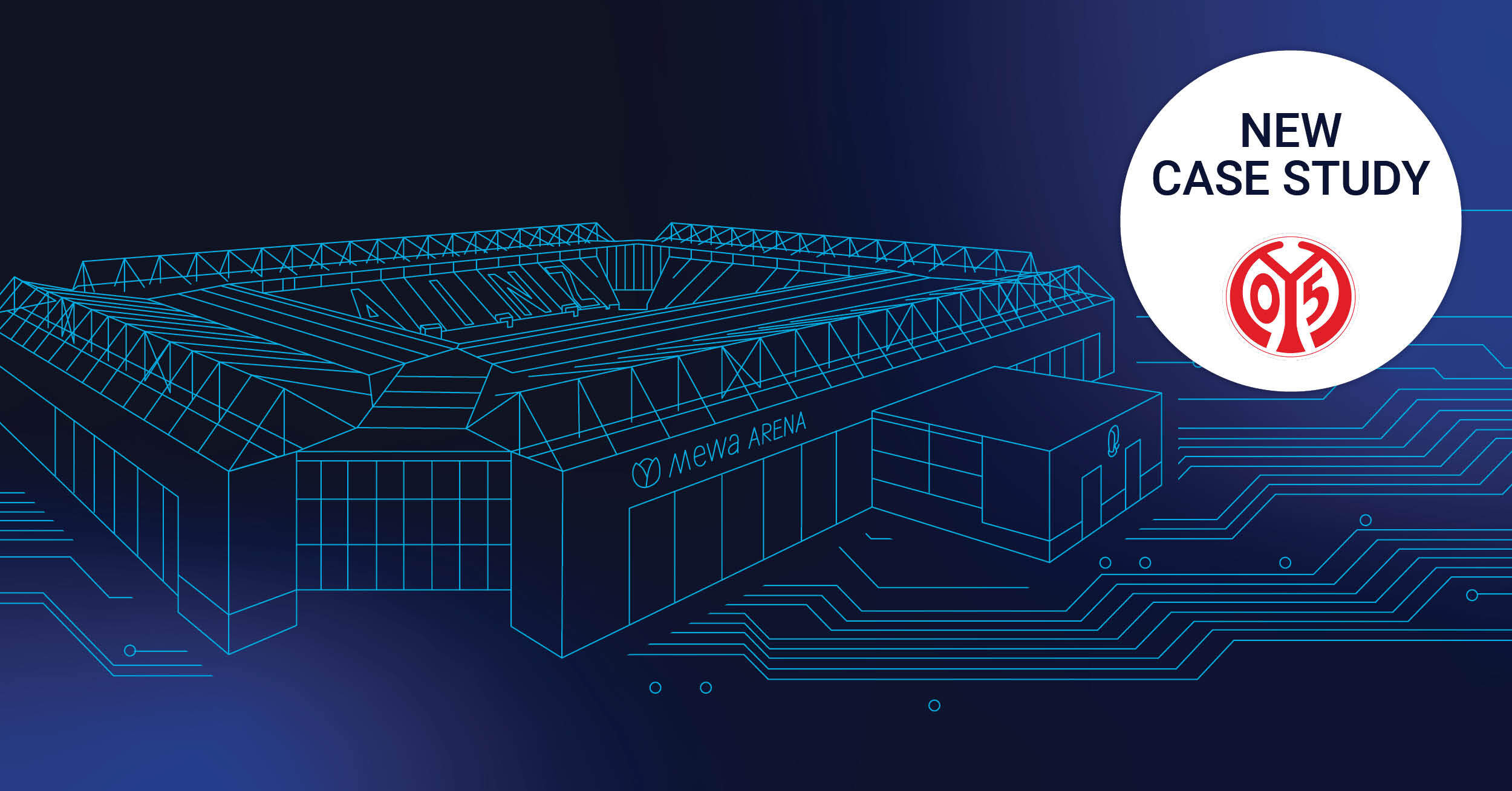A visit to a football stadium is always a unique experience. The anticipation, the journey, entering the stadium, the smell of bratwurst in the air. But have you ever wondered what kind of technical effort goes into making sure a game day goes off without a hitch?
As in many companies, the motto in soccer stadiums is: nothing works without IT.
From stadium admission, wireless network access, and functioning floodlights through to paying for beer at the concession stands — all this and much more is controlled by IT today. A match day would not be possible without IT.
Read in this article how German Bundesliga football team 1. FSV Mainz 05 uses PRTG to monitor the entire stadium technology and secure the match operation.
The company, the soccer club
1. FSV Mainz 05 e.V. has over 20,000 members and employs around 1,100 people. The club's home games are played in the Mewa Arena, which can also be used as an event location. An organization of this size requires a large IT department. The special demands of modern professional football require advanced technology, extensive know-how and additional personnel. The IT department is responsible for a wide range of tasks, including the control and monitoring of advance ticket sales, access control, video analysis systems for half-time meetings in the dressing room, cash registers at the concession stand, floodlight control, WLAN, and club radio.
The IT department also looks after the traditional IT environment, including the network and infrastructure with its devices, applications, storage systems and VMware environment.
 The operation of stadiums for German professional soccer clubs is subject to strict regulations. The first requirements must be met four days before the actual match. A total of about 100 individual points must be met by the day of the game.
The operation of stadiums for German professional soccer clubs is subject to strict regulations. The first requirements must be met four days before the actual match. A total of about 100 individual points must be met by the day of the game.
To meet these special requirements, the IT team has set up two separate systems: one for match operations and one for normal operations (since the stadium operates "normally" when there is no upcoming match). While the traditional IT systems must be available at all times, the demands before and during match days increase significantly. Without comprehensive and reliable monitoring, the IT team at 1. FSV Mainz 05 e.V. would be overwhelmed.
The focus areas of monitoring
1. Monitoring the traditional IT environment
With a wide range of pre-configured sensors - predefined device templates for most systems and devices from established vendors — monitoring of the IT environment can be implemented quickly and easily.
2. Monitoring of stadium technology
Ticket sales, access control, building management systems, floodlight control, stadium radio, video analysis systems and contactless payment - a modern football stadium is much more than just a pitch, goals, and spectator stands. It also has to meet the stringent security and broadcast requirements of the German Football League (DFL). These diverse functions often exceed the capabilities of most monitoring tools, which are limited to IT standards.
3. Visualization
A turnstile at the entrance is jammed, an access point for the app is down, or a cash register at the hot dog stand is malfunctioning. PRTG not only allows you to quickly identify the problem, but also allows the responsible service technician to immediately identify the cause of the malfunction without having to search for it. A stadium map as a background image is very helpful.

The classic IT infrastructure
The IT infrastructure of 1. FSV Mainz 05 e.V. supports the stadium technology as well as the daily business processes. It includes classic components such as servers, databases, storage systems, firewalls, switches, backup systems, Wi-Fi access points and cloud services. They are all centrally integrated into the PRTG monitoring system. Many of these components are automatically monitored by PRTG via SNMP. For others, the IT team uses specific PowerShell scripts to retrieve data via the devices' API, e.g. for the Veeam backup system or the Fortigate firewalls.
The club's website is a central communication medium for fans and the press. PRTG Remote Probes are used in different subnets to monitor the loading times of the website from different perspectives and to optimize the performance. This makes it possible to effectively monitor multiple sites with a single PRTG instance and analyze website load times from different angles.
The overview
Efficient visualization of IT and stadium technology allows IT teams to see the big picture. Only by localizing the cause quickly and easily can issues be resolved before they lead to serious problems. For this reason, IT admins created maps in PRTG right from the start and they now form the basis of the visualization. The IT team of 1. FSV Mainz 05 e.V. has created maps for all important IT and stadium technology systems. For example, the club's media department can view the status of radio broadcasts and studio equipment, as well as the current number of listeners, in a separate dashboard.

The days between matches
Many systems are shut down between match days and started up again before the next home game. This poses a challenge for the IT monitoring solution, as a shutdown of systems is usually considered a failure in monitoring.
Although sensors can be automatically paused in PRTG to avoid error messages, the Bundesliga match schedule does not follow a specific enough pattern for these routines to work. Although 1. FSV Mainz 05 e.V. has a game every week, home games typically only take place every two weeks, apart from three-game weeks, international breaks and cup games. For this reason, a PowerShell script is used that integrates the official DFL match schedule into PRTG. This means that the systems are automatically included in PRTG monitoring again when the match schedule is started.
Watch this video to get all the details on how 1. FSV Mainz 05 is using PRTG to cover all their monitoring needs and to ensure a flawless match day:
The added value of PRTG
Paessler PRTG has become an indispensable tool for 1. FSV Mainz 05 e.V. to ensure smooth match operations. Early disruption reports allow the causes to be quickly identified via the dashboards. This means that targeted measures can be initiated in good time to resolve problems in order to avoid breakdowns and serious problems. This is crucial in order to meet the strict requirements.
 Published by
Published by 






